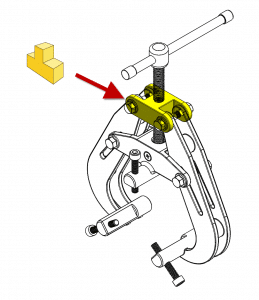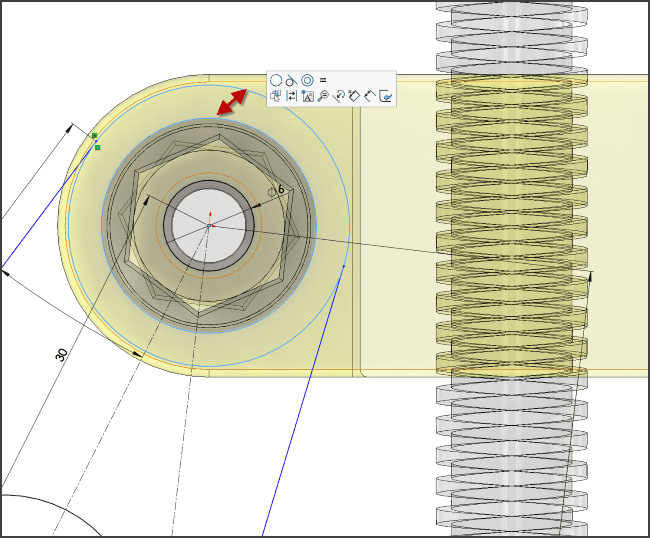4 Key Ways SOLIDWORKS Stands Out in the CAD Market
When SOLIDWORKS 3D CAD was first released back in 1995, it was already leveraging some of the core functionality and modeling principles we know today. At that time, it quickly came to prominence as a parametric solid modeler. You could sketch, add rules-based constraints to these sketches, and then extrude them into 3D features.
 But what has SOLIDWORKS become, and what has SOLIDWORKS been, in the days that have come to pass? For years – many years, in fact – SOLIDWORKS has given users the ability to make manufacturing drawings and assembled part systems in ways that sync seamlessly with their included parts and one another. Furthermore, as the design and manufacturing world has advanced, SOLIDWORKS 3D CAD has advanced with it. In many cases, it’s proven to be a catalyst of this spheric advancement.
But what has SOLIDWORKS become, and what has SOLIDWORKS been, in the days that have come to pass? For years – many years, in fact – SOLIDWORKS has given users the ability to make manufacturing drawings and assembled part systems in ways that sync seamlessly with their included parts and one another. Furthermore, as the design and manufacturing world has advanced, SOLIDWORKS 3D CAD has advanced with it. In many cases, it’s proven to be a catalyst of this spheric advancement.
For those new to (or relatively inexperienced with) SOLIDWORKS, here are four key ways SOLIDWORKS stands out as a CAD platform.
Design flexibility and automation
One of the fundamental beauties of SOLIDWORKS has been its interconnected part, assembly, and 2D drawing architecture. I can firmly say that, without this, SOLIDWORKS would not be what it is today. It’s the underlying foundation of everything SOLIDWORKS has grown to be.
On day one of our SOLIDWORKS Essentials course, we show just how this works. We create a simple part – a bracket, let’s say – and we show how this part is linked with its manufacturing drawing. Without pushing a button, once a physical cut feature is added to the bracket, it instantly appears in its manufacturing drawing. Not only that, but it also appears in any assembly context it’s referenced within.
While all three file types have received hundreds of pages worth of enhancements over the years, there are eligible voters younger than the file relation infrastructure offered by SOLIDWORKS. It’s time-tested, and we’ve possibly saved years of productivity because of this simple area.
Since SOLIDWORKS launched, products like DriveWorksXpress, various Gold partner products, and the open API of SOLIDWORKS have only extended this functionality to help more customers in more industries with increasingly diverse applications design quicker than ever.
Realistic handling of other CAD platform files
One of my favorite parts about SOLIDWORKS is its ability to translate many different types of files. This, like the points mentioned in the previous section, has been around for a long time.
SOLIDWORKS can import/export about 35+ different file types, which offers a tremendous amount of assurance. This allows us to work with almost any vendor or customer, even if they’re giving us files to print, manufacture, alter, or reference that originally stem from platforms like AutoCAD, Creo, SolidEdge, etc.
The R&D team at SOLIDWORKS is very realistic about the need for this functionality. To prove it, just this year, SOLIDWORKS rolled out a brand new technology named 3D Interconnect. While SOLIDWORKS has historically allowed for the import and export of non-native file types, 3D Interconnect gives you the ability to keep non-native files fully up-to-date!

For example, if your vendor using SolidEdge makes a design change inside of SolidEdge to a part you’ve already brought into one of your SOLIDWORKS assemblies, you won’t have to delete any work you’ve done to this file inside of SOLIDWORKS. You can easily sync it with the design changes made by your vendor.
Showing real-world implications of your design
You can model some really amazing things in plenty of CAD platforms; however, not every CAD platform gives you an easy but effective look at what your design’s real-world implications might be. What do I mean by this?
Let’s say your company was working on designing a mold for one of your customers. From a CAD standpoint, you can design this mold in 3D – this step doesn’t inherently take into consideration any problems that might arise in several key areas. For example, it doesn’t take into account: 1) how the injection molding process will go, given the flow from the gate and various other mold flow factors, 2) the cost of manufacturing the mold itself, 3) the result of potential stresses on the part once it’s in production fulfilling its use-purpose.
Using SOLIDWORKS Plastics, SOLIDWORKS Costing, and SOLIDWORKS Simulation, you can answer all of these questions, respectively, without ever leaving the SOLIDWORKS program. Each of these modules runs inside of SOLIDWORKS, which allows you to iterate without the time-consuming task of importing and exporting from/into different software packages.
The user network and what it means for you
As an experienced SOLIDWORKS Technical Support Engineer and a Certified SOLIDWORKS Expert, I can confidently address most SOLIDWORKS questions that arise. But, I’ll admit, there are still questions that pop up that even I need help with.
Luckily, I’m part of a user community that consists of over 3 million active users worldwide. If you’re a user like myself (in addition to having access to the team here at Fisher Unitech), you have free access to the brains of every designer, engineer, and industry guru using the SOLIDWORKS Forums. This is an invaluable resource whenever you’re stumped or looking for another set of eyes on a question or issue.
SOLIDWORKS is also hugely integrated into technical schools, colleges, and universities all over the globe. This, combined with its industry-recognized certification program, makes SOLIDWORKS an advantageous platform for designers and engineers in the job market. Inversely, it also makes it an attractive option for prospective employers, as SOLIDWORKS’ embedment within the education and commercial markets ensures it’s readily familiar to top job candidates.

 Blog
Blog